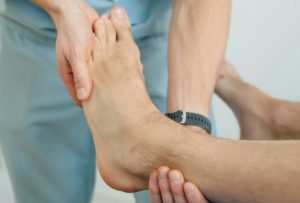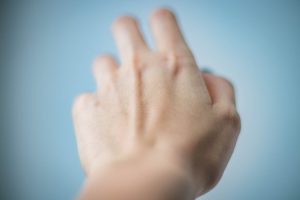Dr. Enrique Gastaldi Orquín
I am writing these lines to share some observations that, after these weeks of confinement, I have noticed. After more than thirty years as a traumatologist, treating sports and degenerative injuries, I have come across two situations: the increase in the pain threshold and the appearance of what I have come to call “confinement injuries”.
Pain threshold: Fewer consultations and greater resistance to pain
The pain threshold is the level of sensitivity at which we feel pain. During this time, we have had our consultations on “stand-by” – attending only emergencies and cases that could not be delayed-, following the protocols of the state of alarm caused by COVID-19. However, we continued to work through telephone consultations.
We asked our patients about their health and that of their families, as well as their trauma problems. Thanks to new technologies, sending images via WhatsApp has been a great help. Seeing a swollen knee, a lump or images of tests such as MRI and CT scans through patient portals has allowed us to make diagnoses without the need for an in-person visit.
Interestingly, many patients have reported a marked improvement in their complaints. Even when we offered them the option of consulting in special cases, most of them declined the proposal forcefully.
A military doctor friend of mine told me that a civil guard with kidney colic preferred to stay at home with Paracetamol and Nolotil rather than go to hospital. “No way, Lieutenant Colonel. To take Paracetamol and Nolotil, I stay at home”, he replied.
Fewer emergencies and fewer accidents
The traumatology emergency rooms have been practically empty. There have been no traffic accidents, no contact sports and fewer people have gone out. Many people with lumbago or shoulder pains who used to go to the emergency room have preferred to stay at home. And no wonder. It is better to “have a slightly torn meniscus” than to run the risk of contracting the virus.
Compulsory rest and its effects: Benefits for degenerative injuries
Confinement has brought with it enforced rest which, in many cases, has been beneficial for degenerative injuries. By walking less, the joints have been less burdened, and many people with osteoarthritis have experienced improvement.
However, this is not a general rule. Some patients have found that inactivity has caused stiffness and increased pain.
The impact of confinement on older people
In older people, loneliness, uncertainty and lack of movement may have increased sensitivity to pain. Many people ask me whether it is better to rest or to move. My advice is always to move within one’s means.
It is better to overdo it than to underdo it. “The less you do, the less you want to do”. And in older patients, this can lead to progressive physical and mental limitation. If doing ten repetitions hurts, try doing eight. If eight is too many, do six, but do something. “Movement is life”, said the classics.
Confinement injuries: Exercise and cleanliness, the big culprits
Confinement has led many to try to do what they don’t usually do: exercise and clean. This has led to an increase in injuries, especially to the back and knees.
Some have tried to compensate for the lack of activity by walking more than usual. One patient, whose only athletic traits were his trainers, decided to walk around his garden and ended up with pyramidal syndrome, an entrapment of the sciatic nerve caused by overuse. This injury usually affects runners, but in people unaccustomed to sport it can be caused by simply walking more than usual.
There has also been an increase in cases of lumbago and disc impingement after exertion such as moving furniture, carrying heavy objects or maintaining inadequate posture. Care must be taken with this, as a poorly managed injury can develop into lumbar disc herniation, which manifests itself when low back pain radiates down the leg, known as lumbosciatica.
One patient developed lumbosciatica after moving some shelves. I suggested he have an MRI scan at the hospital and he replied the same as the civil guard with the kidney colic: “I’ll wait for this to happen…”.
Risks in the elderly
In older people with osteoporosis, excessive load exertion can lead to a vertebral fracture. If you are going to make an effort to which you are not accustomed, it is advisable to protect yourself with a girdle and, above all, to be cautious. Many cases of lumbago do not appear at the moment of exertion, but hours or days later.
The shoulder, another victim of confinement
Another of the most annoying injuries we see in consultation is that of the shoulder. Many patients report very limiting pain, which prevents them from dressing, combing their hair or fastening their bra. In addition, it is often worse at night.
This is due to activities such as cleaning windows or fixing lofts, which require the arms to be held above the head for prolonged periods of time. In 80-90% of our daily activities we do not raise our hands above our shoulders, so these repeated movements create pinching between the shoulder tendons and the acromion bone, causing inflammation and pain.
Overloaded knees and joints
Knees have also suffered. Bending over to clean low drawers or do gardening has led to meniscal injuries in many patients. The pain is usually located on the inside of the knee and is intensified by walking on uneven ground, turning on the leg or even changing position in bed.
Another patient called me because his knee was “catching” and crunching when he flexed it. When asked what he had been doing, he confessed that he had been spending too much time going up and down stairs. A regular runner told me that, unable to go running, she spent an hour a day walking up and down a step stool. The following week she called me with pain in her knee.
Conclusion
Confinement has changed our habits and brought unexpected injuries. It is important to find a balance between activity and rest to avoid unnecessary problems.
Exercising and maintaining a healthy lifestyle is a sign of advanced societies, but it should be done in moderation and with common sense. Let’s take care of our body, our diet and, above all, our health.
All with coneiximent. Take care everyone and AMUNT!
Otras noticias

Cirugía mínimamente invasiva en traumatología: ventajas y aplicaciones

El esguince de tobillo “mal curado”: causas y soluciones


